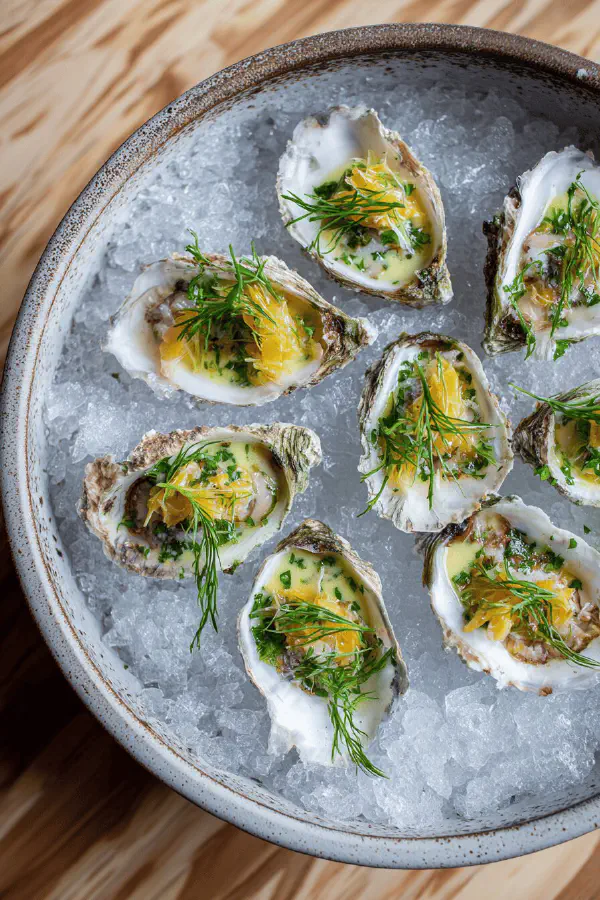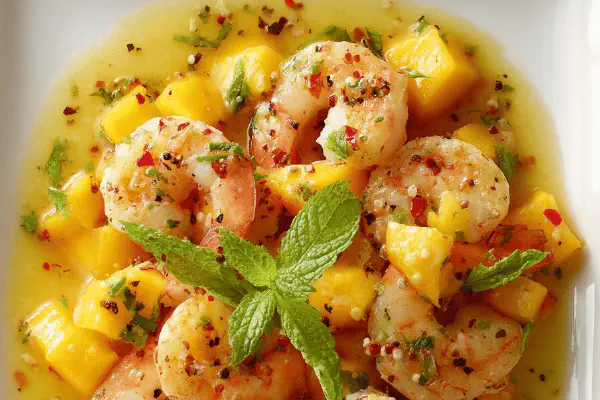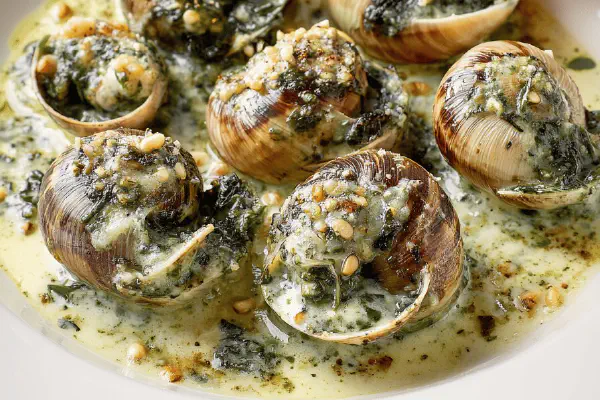Featured Recipe
Oysters Coconut Lemongrass

By Kate
"
Oysters served chilled with a tangy, aromatic sauce blending coconut milk, lime zest, and lemongrass. Sauce thickened slightly by crema and balanced by savory fish sauce and fresh herbs. Quick prep, no cooking. Keep oysters cold on crushed ice to preserve brininess. Sauce strained carefully for smooth texture. Great for summer starters. Substitutions include yogurt for crema, or white miso for fish sauce. Opens the palate with citrus notes and herbal freshness.
"
Prep:
40 min
Cook:
0 min
Total:
40 min
Serves:
24 oysters
seafood
appetizer
fusion
summer dishes
quick recipes
Introduction
Hit the market early. Fresh oysters have a clean brine, should smell like cool sea breeze, no fishiness or overpowering marine funk. That chilled chill sharpens flavor. Sauce? Skip heavy mayonnaise, aim for bright acidity and herbal punch. Lemongrass adds lemony grassy aroma; coconut milk tames sharp edges, creamy but light. Blend while it’s cold; texture changes if sauce warms. Don’t rush shucking if unpracticed — use firm grip and subtle twisting, never muscle opens shells. Lay oysters flat on ice bed, keeps temperature steady. Sodden ice water kills vibrancy. Sauce covers each oyster in a thin veil, never drowning it. Splash tamari instead of fish sauce for umami nod without overpowering fishiness. Micro-adjust acidity with lime juice after blending; taste changes if sauce sits too long. Watch garlic; raw clove bites hard; bruising releases subtle aroma, not punch-you-in-face rawness. Cilantro stalks bring earthiness but no bitterness. This appetizer screams freshness and shows off ingredients at their peak.
Ingredients
About the ingredients
Coconut milk texture varies wildly; choose richer canned types, or full-fat refrigerated cartons, avoid watery separates. Yogurt in place of sour cream adds protein and tang; sour cream can split at room temp, yogurt more stable. For umami, fish sauce can be replaced with tamari or light soy; note saltiness differs. Lemongrass stalk bottom third soft enough to blend, upper parts woody and must be discarded or sliced very thin for infusions. Scallions add crunch and bite; replace with chives in a pinch if unavailable. Garlic freshness is key; bottled minced garlic brings sharpness but lacks subtle depth. Cilantro leaf to stem ratio must favor leaves; stems bitter if overused. Keep seafood cold; do not let oysters sit out more than 15 minutes post-shuck. Crushed or shaved ice maintains temperature; larger cubes melt slower but less contact area.
Method
Technique Tips
Blending at high speed ensures homogeneity and unlocks flavors; don’t underblend or sauce will have chunks of lemongrass and garlic, too rough in mouth. Straining avoids fibrous bits and gives sauce silkiness. Compost discarded aromatics for zero waste. Ice bed keeps oysters cold, crucial—warm oysters become dull and lose firmness. Open oysters carefully with oyster knife; use protected glove or towel; dangerous if careless. Detach oysters gently to avoid tearing; place meat and juice intact. Serve immediately; acids oxidize, herbs wilt, citrus bitterness grows. Sauce adjusts quickly—add lime juice gradually to avoid over-acidifying. Serve sauce chilled; warm coconut milk clumps. Store leftover sauce in airtight container, use within 12 hours. If you lack fresh lemongrass, substitute finely grated lime zest plus pinch of ginger, but flavor is less nuanced. Avoid adding salt before tasting; oysters and tamari add enough salinity. Crunchy texture of scallion versus softness of cilantro adds complexity. All ingredients cold before blending impart a fresher aroma.
Chef's Notes
- 💡 Choose coconut milk carefully. Light versions dilute flavor. Go for full-bodied types, canned or fresh, avoid watery. Texture alters drastically. For sauce, yogurt can replace crema; stable choice. Adjust thickness with more milk if needed. Too thick? Use cold milk.
- 💡 Freshest oysters vital. Should smell clean, like cool sea. Any hint of fishiness? Toss. Shucking? Take time. Firm grip, twist gently. Risk injury if rushed. Cold oysters mean crisp flavors, keep on ice.
- 💡 Straining sauce? Press hard. Extract every drop. Compost solids, zero waste. Balance flavors right. Adjust lime juice after blending. Taste matters, watch acidity. It can go from bright to bitter fast with time. Control acidity cautiously.
- 💡 Ice bed is essential. Keeps oysters chilled, fresh. Bigger ice stays cold longer but less surface area. Use crushed for contact. Warm oysters lose texture and flavor, don’t let them sit.
- 💡 Watch garlic closely. Fresh only, bruised is best. Whole clove can bite. Release gentle aroma, not harshness. Scallions lend crunch. If unavailable, chives will work but flavor shifts.
Kitchen Wisdom
What if oysters are open?
Discard those. They shouldn't be open before shucking. Fresh means a clean shell closed tight. Safety first; can lead to foodborne illness.
How to store leftover sauce?
Airtight container is key. Use within 12 hours. Warm coconut milk clumps, sauce separates. Keep in fridge or it's off fast.
Can I use dried lemongrass?
Fresh is best here. Dried? Flavors lack depth. If stuck, pinch of ginger plus zest as backup. Not perfect but works.
What to do with leftover oysters?
Best used same day. Cook lightly in broth for soups. Heat alters taste, texture changes. Use within hours for safety.



